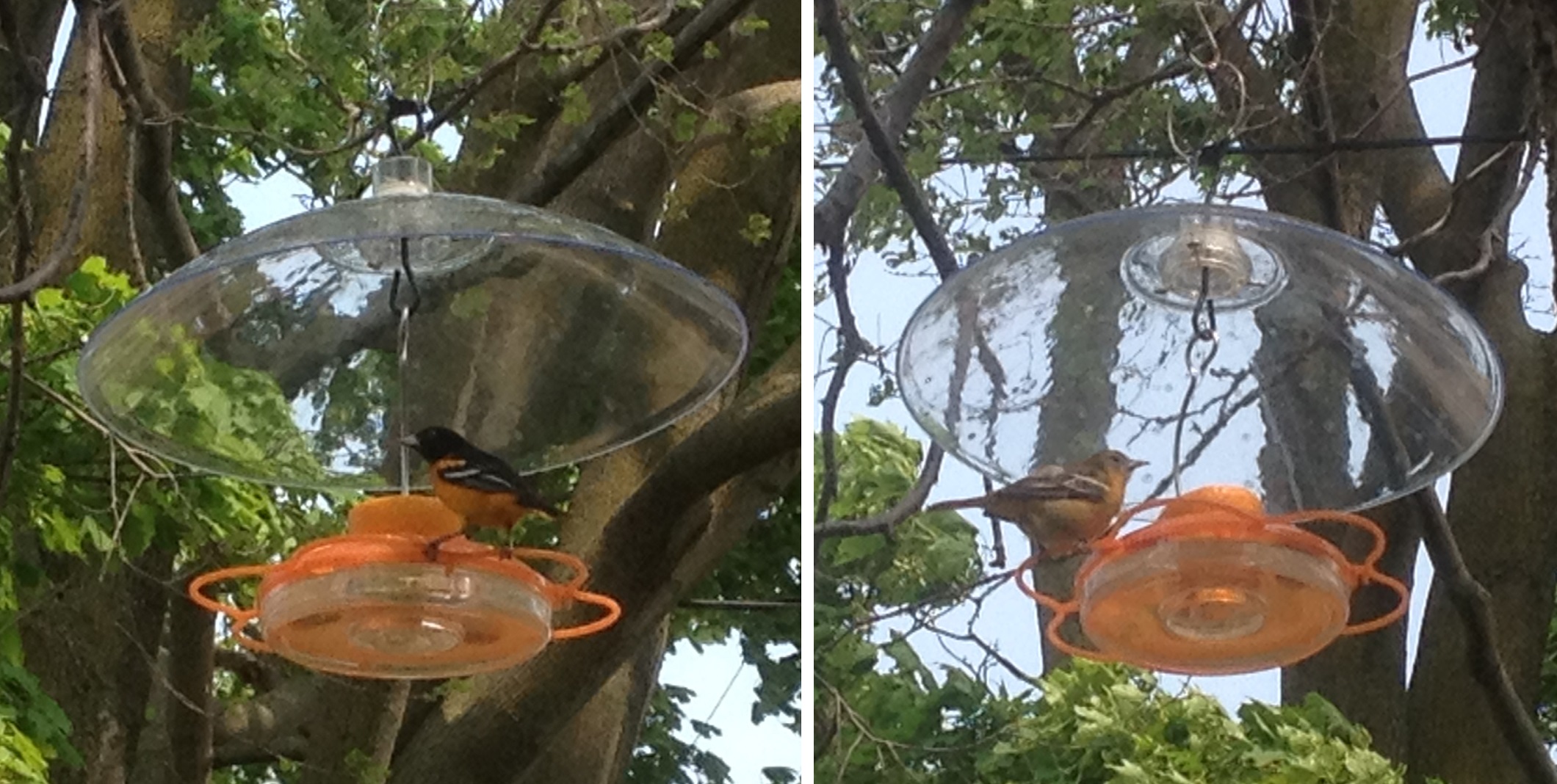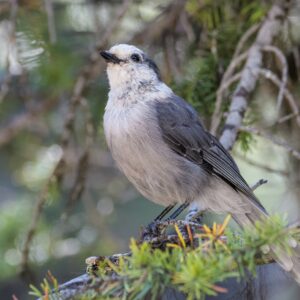Our Orange Crush: A Baltimore Oriole Love Story
Thank you to our Nature Network partner Bird Friendly Hamilton Burlington for sharing this month’s blog.
It’s hard not to become smitten with the beautiful Baltimore Oriole that graces us with its presence each spring and summer across most of southern Canada. The striking, brilliant orange plumage of the males, and yellow-orange plumage of the females, isn’t something we’re used to seeing in the birds of Canada—like something out of the tropics! But then again, given that they spend the remaining seven months of the year in the Caribbean, Central America, and South America, can they not also be considered tropical birds?
Yet, despite the Baltimore Oriole’s conspicuous beauty and common presence, it’s remarkable how many people rarely notice them. They’re one of those birds that, unless you’re looking up for them in the treetops, or have learned to recognize their liquid, whistling song, you may pass by them without knowing.
Of course, others have become hip to the oriole scene and have installed oriole-specific feeders in their yards, available at many hardware stores and bird specialty shops, which offer up a tantalizing half orange, and irresistible grape jelly (not jam). That’s right, Baltimore Orioles have a sweet tooth! They are even known to raid hummingbird feeders to satisfy their sugary cravings if it’s easier than finding flower nectar or ripe fruit on trees.
General public… meet the Baltimore Oriole
In spring 2023, to support Baltimore Orioles and introduce the public to this special bird, Bird Friendly Hamilton Burlington installed an oriole feeder in front of our partner BurlingtonGreen Environmental Association’s Eco-Hub, at the Burlington Beach — a popular local destination along the Great Lakes Waterfront Trail in Ontario. Within 2 days, the orioles were on the feeder!

Male and female Baltimore Oriole on a feeder (photo: Dave Tourchin)
During May and June, we enjoyed pointing out the orioles to passers-by, who often responded with a gasp: “Aww, what kind of bird is that…it’s so beautiful!” The conversations about birds that followed often led to broader discussions about bird and nature conservation, with more people stopping to browse our information tables. Good job, oriole friends! In summer, their visits to the feeder became less frequent, which is common, as they spend more time tending to their nests and seeking a more protein-rich diet of insects for themselves and their young.
In addition to raising awareness of orioles, our bird team was learning, too. After a while, we were able to predict when the orioles would come down onto the feeder, as they would whistle their characteristic tones about 10 seconds in advance; then sure enough… there they were! Also, one morning when we were pulling down the feeder to serve up a fresh breakfast of grape jelly with a side of orange, a male oriole appeared instantly, about two metres away, making one heck of a chatter while swooping back and forth. A flurry of black and orange flashed before my eyes! The oriole is not normally an aggressive bird, but this one’s message was clear: “Don’t mess with my food!” After reassuring him in a calm voice that I was his friend and feeder, he resorted to waiting patiently in a nearby tree until breakfast was served. Lesson learned — don’t let the oriole see you pull the feeder down! I guess all relationships have their ups and downs; we made up and never spoke of that moment again.
Helping the Baltimore Oriole
Baltimore Oriole populations have been declining throughout their range by an estimated 0.84% per year for a cumulative decline of 36% between 1966 and 2019 (see the Baltimore Oriole Life History (CornellLab). While not a Species at Risk, they are listed as a priority species in several of Canada’s Bird Conservation Regions. So, how can you help?
- In addition to hanging feeders, consider planting flowering fruit trees native to your region. Baltimore Orioles love the nectar from the flowers in spring, the insects in early summer, and the fruit in late summer (see birdgardens.ca).
- Orioles also like mature, deciduous trees, in open woodlands or at forest edges, which are typical of urban areas. They are not deep forest birds.1 The females often weave their unique, bag-like nests in the tops of mature deciduous trees. You can help preserve oriole habitat by working toward urban forest canopy protection and canopy growth in your municipality, as we have in Burlington — a Bird Friendly City certified by Nature Canada since 2022.
- Drink Smithsonian-certified Bird Friendly Coffee, available from local or online retailers. Bird Friendly Coffee is shade grown and organic, which preserves precious bird habitat in coffee-producing regions of Central and South America, where many orioles overwinter.
- Practice all those things that help many species of birds, like minimizing pesticide use to protect orioles and their insect food sources, applying proper bird-collision deterrent markings to your windows and glass railings, cleaning/disinfecting feeders regularly, and keeping cats indoors.
So, if you’re looking to engage students or the general public on birds, consider an oriole feeder. Otherwise, keep an eye out for splashes of orange in the flowering trees and treetops this spring and summer, and you’ll no doubt fall in love with the beautiful Baltimore Oriole, just as we have!
Bird Friendly Hamilton Burlington (BFHB) is a not-for-profit, non-partisan group consisting of local volunteers and community partners who care about helping birds and protecting biodiversity. It relies primarily on small grants from Nature Canada to fund its projects and cover expenses.
Want to help Canadian species like the Baltimore Oriole and more? Stay tuned with the latest in Canadian nature by subscribing for email updates. You’ll receive regular updates about what we’re doing to protect Canadian nature and how you can help.



